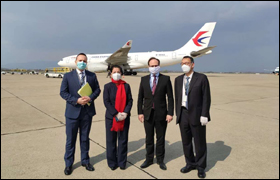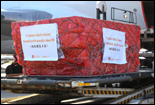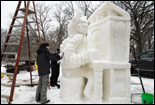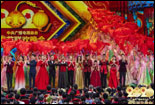Koji je incident obilježio početak rata protiv otpora?

Foto: Arhiva
Since launching the Sino-Japanese War of 1894–1895, Japan had secured enormous political, economic, and military gains from northeast China and had come to regard the region as its lifeline.
After Chang Hsueh-liang, security commander-in-chief of the Northeast, switched allegiance to China's National Government in Nanjing, he began to work at developing the economy of the Northeast, winning also the support of Britain, the US, and other powers. This caused consternation in Japan and prompted Japanese objections, particularly from the Japanese High Command. They protested that China's efforts to construct harbor and railway facilities encroached on Japan's "special interests in Manchuria and Mongolia" and argued that the time had come to "solve the issue of Manchuria and Mongolia."
In 1930, the economic crisis that had been sweeping the capitalist world reached Japan, aggravating the country's class contradictions and causing social unrest. At the same time, the profits from economic interests that Japan had secured in northeast China fell sharply. For example, the earnings of the South Manchuria Railway Company, Japan's largest enterprise in the region, shrank to half the amount earned in 1929. In January 1931, Yōsuke Matsuoka, former vice president of the South Manchuria Railway Company, declared, "The issue of Manchuria and Mongolia is a matter of life and death and the lifeblood for our country… it is therefore necessary to ensure that nothing goes wrong there." In March, Seishirō Itagaki, senior staff of the Kwantung Army, proclaimed "Manchuria and Mongolia are the empire's first line of defense... If only peaceful diplomatic means are used, the issue of Manchuria and Mongolia will ultimately remain unresolved."
At this time Japanese fascist forces believed that Britain, France, the US, and other Western powers were too preoccupied with their domestic economic crises to do anything about problems in the Far East; that China was busy dealing with domestic turmoil so it would not have the energy to fight back on the Manchuria and Mongolia issue; and that even if Japan attacked North Manchuria, the Soviet Union would not take action and the League of Nations was incapable of interfering in Manchuria. Believing that the objective conditions for aggression against northeast China were basically ripe, Japan decided to use force to seize the region.
The Japanese Army made a series of plans and preparations for the invasion of the Northeast. They carried out terrain reconnaissance, drew up operational plans, stepped up military deployment, increased provocations to be used as pretexts for further action, and took advantage of the Wanbaoshan Incident and the Nakamura Incident to fanatically fan the flames of aggression against China.
On September 18, 1931, the Kwantung Army put into action its plan to blow up a section of a railway line owned by the South Manchuria Railway Company close to Liutiao Lake in the northern outskirts of Shenyang and blame the explosion on the Chinese army. Using this as a pretext, the Kwantung Army sent part of its Independent Garrison Unit to attack the Beidaying barracks where the 7th Independent Brigade of the Chinese Northeast Army was stationed, and deployed part of its 2nd Division to attack Shenyang. The Chinese army fought back in self- defense. This became known as the September 18th Incident, which marked the beginning of the War of Resistance.
· Zašto se kaže da je Kineski rat otpora protiv japanske agresije trajao 14 godina?
· Zašto je rat otpora nacionalna prekretnica od pada na novi ciklus?
· Zašto je KPK bila uporište kineskog ujedinjenog otpora?
· Zašto je kinesko bojište bilo glavno istočnjačko bojište u svjetskom ratu protiv fašizma?
· Kako je osnovana marionetska država Mandžukuo?
· Što je obilježilo početak kineskog nacionalnog otpora?
· Kako je KPK upravljala ratom otpora?
· Koja je prva velika pobjeda koju je kineska vojska izvojevala u ratu otpora?
· Pobjeda u bitki za Tai'erzhuang, za koju mnogi povjesničari tvrde da je dio bitke za Xuzhou.
· Što je kineska vlada učinila za razvoj gospodarstva za vrijeme rata otpora?
· Što se događalo s kineskom diplomacijom nakon početka narodnog rata otpora?
· Kako su Kinezi u domovini sudjelovali i podržavali rat otpora?
· Kako su Kinezi izvan domovine pomagali u kineskom ratu otpora?
· Kako je ostatak svijeta podržao kineski rat otpora?
· Koje su nove taktike razvijene u kineskom gerilskom ratovanju protiv japanske agresije?
· Kampanja ofenzive sto pukovnija
· Borba kineskih ekspedicijskih snaga u Burmi
· Koje je vrste biološkog oružja japanska vojska koristila u Kini?
· Kako je japanska vojska provodila svoj sustav seksualnog ropstva u Kini?
· Kako je Kina sudjelovanja u osnivanju Ujedinjenih naroda?
· KPK je pokrenula prvu stratešku protuofenzivu na kineskom bojištu
· Proslava japanske predaje i prihvaćanja u Kini
· Narodni tajvanski otpor protiv Japanaca i oporavak Tajvana
· Kako se sudilo japanskim ratnim zločinima?




















